When you’re out in the wild, having a few survival tricks up your sleeve can make all the difference. Whether you’re an experienced adventurer or just getting started, these outdoor hacks can help you navigate unexpected challenges. Let’s dive into some practical tips that can help keep you safe and sound in the great outdoors.
1. Use Duct Tape For Quick Repairs

Duct tape is one of those versatile tools that can come in handy in countless ways during an outdoor adventure. If your tent gets a tear or your backpack strap snaps, a few strips of duct tape can provide a quick fix. Even if you get a blister, wrapping some duct tape over it can provide a makeshift bandage until you get to proper medical supplies. According to outdoor expert Dave Canterbury, duct tape’s reliability in various scenarios is why it’s a must-have in any survival kit. Its waterproof nature and adhesive strength make it an indispensable tool when you’re miles from the nearest store.
It’s not just about repairs; duct tape can also be used to make other tools. You can create a funnel, patch slippery soles on your shoes, or even create a survival spear by securing a knife to a stick. In emergency situations, you can braid it into a makeshift cord or rope. Its uses are limited only by your imagination and the situation at hand. This simple tool is lightweight yet incredibly effective, making it a staple for any outdoor enthusiast.
2. Turn Your Water Bottle Into A Lantern
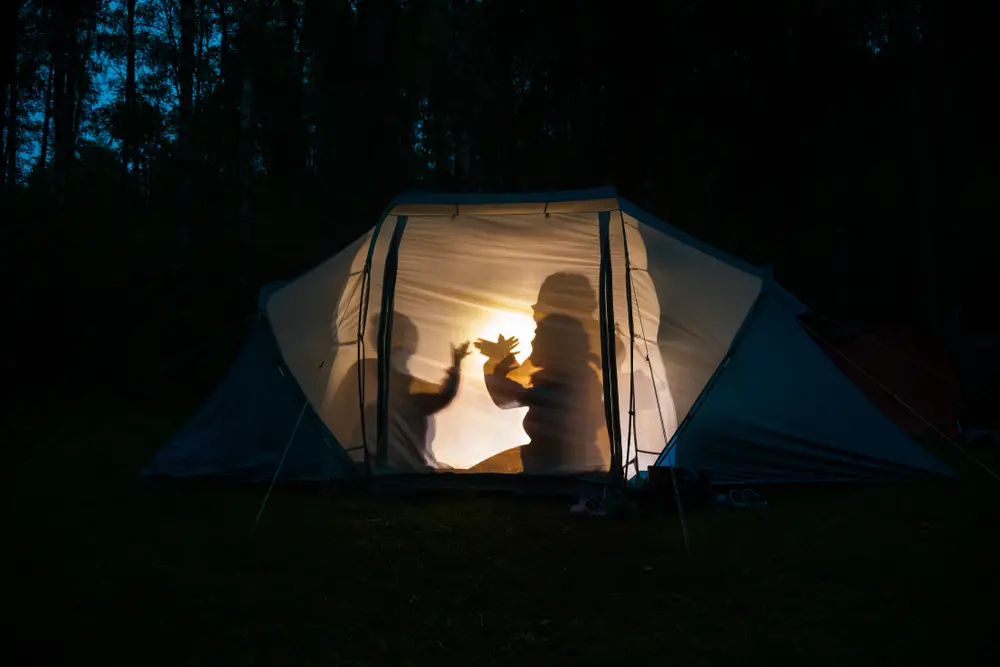
When night falls and you find your flashlight is too harsh or directional, you can turn your water bottle into a makeshift lantern. Fill your bottle with water and place your flashlight or headlamp against it. The water diffuses the light, creating a soft glow that illuminates a wider area. It’s an ingenious way to amplify your light source using minimal resources. This hack provides a gentler light that’s ideal for gathering around or even reading a map without straining your eyes.
If you have a colored water bottle, it can add a fun tint to the ambient light, which can be helpful for maintaining night vision. Remember, the clearer and cleaner the water, the better the light diffusion. This hack is particularly useful if you’re trying to conserve battery life. You won’t need multiple light sources to get a good amount of visibility. It’s a simple trick that boosts your lighting options and enhances your overall camp experience.
3. Make A Natural Bug Repellent

Bugs can be a real nuisance when you’re trying to enjoy the great outdoors. Instead of relying on chemical repellents, you can make your own using natural ingredients. One popular mixture is a combination of crushed garlic cloves and lemon juice. Researchers found that the combination of these ingredients can be quite effective at deterring insects due to their strong odors. Apply it to exposed skin to keep mosquitoes and other pests at bay.
Another option is to burn sage or rosemary in your campfire. The smoke acts as a natural bug repellent, adding a pleasant aroma to your campsite. Essential oils like eucalyptus and peppermint can also be diluted with water and sprayed onto your skin. These natural alternatives not only protect against bites but also reduce the risk of allergic reactions associated with chemical-based repellents. Plus, they offer a sustainable way to safeguard yourself while respecting the environment.
4. Create A Makeshift Shelter With A Tarp
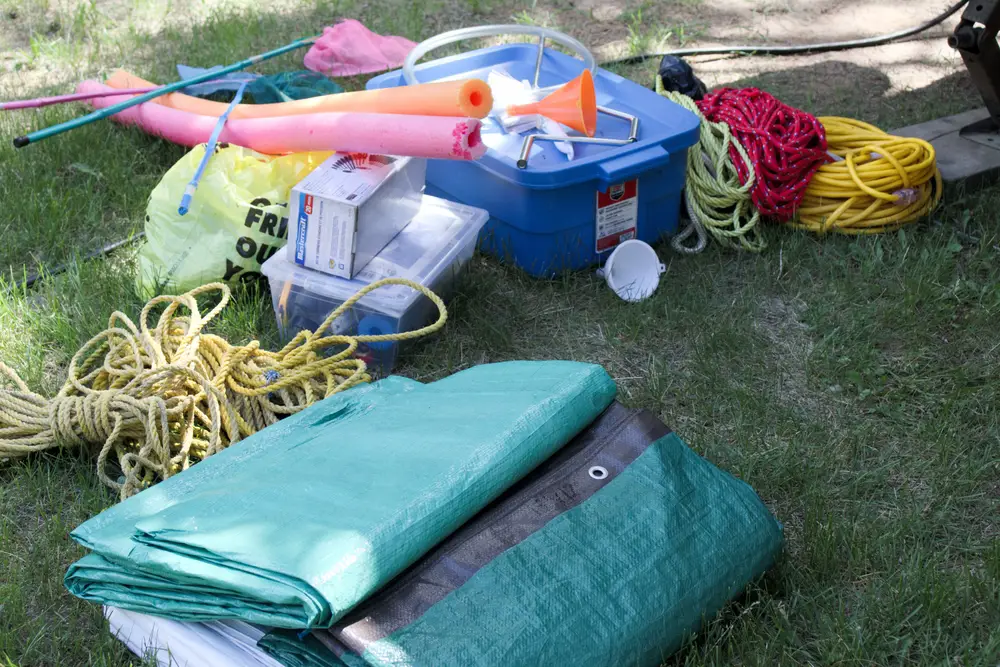
When the weather takes a turn for the worse, having a reliable shelter can keep you dry and protected. A tarp is a lightweight and versatile piece of gear that can be quickly transformed into a shelter. Simply tie it up between trees or secure it with stakes to create a roof over your head. With some practice, you can configure it in various shapes depending on the conditions. A tarp shelter can be lifesaving in unexpected rain or wind.
Not only does it provide coverage, but it can also serve as a groundsheet to keep you dry from below. If you’re dealing with intense sun, a tarp can act as a sunshade to prevent overheating. It’s essential to secure it tightly to withstand strong winds. You can even use it as a makeshift hammock or stretcher if needed. A tarp’s adaptability makes it a crucial component of any outdoor survival strategy.
5. Start A Fire With Steel Wool And A Battery

Fire is crucial for warmth, cooking, and signaling for help, and knowing how to start one in various conditions is vital. If you’re out of matches or a lighter, you can start a fire using steel wool and a battery. By connecting the steel wool to the battery terminals, the current causes the steel wool to ignite. This method is not only reliable but also quick, which is essential in survival situations. According to survival instructor Cody Lundin, mastering alternative fire-starting techniques can significantly enhance your outdoor readiness.
Ensure you have fine-grade steel wool, as it ignites more easily than coarser wool. Once it sparks, transfer the burning wool to your tinder bundle to get your fire going. This technique is especially useful in damp conditions where traditional methods might fail. Always have a backup plan for fire-starting, and carry a small piece of steel wool and a battery in a waterproof container. This hack is especially handy in emergencies, giving you an edge in a survival scenario.
6. Purify Water With A Plastic Bottle

Finding clean drinking water is one of the biggest challenges in a survival situation. If you’re stuck without purification tablets or filters, you can use a plastic bottle to purify water. Fill the bottle with clear water and expose it to direct sunlight for a minimum of six hours. This process, known as solar disinfection, uses UV rays to kill harmful pathogens. It’s a simple yet effective method to ensure you have safe water to drink.
The key is to use clear plastic bottles, as colored or opaque bottles reduce the effectiveness of UV penetration. While it may not remove chemical contaminants, it’s a great solution for microbial safety. Remember to shake the bottle to oxygenate the water, which helps enhance disinfection. Always look for clear water sources to start with, as this method doesn’t remove particles or debris. With this hack, you can turn a sunny day into a lifesaver.
7. Signal For Help With A Mirror
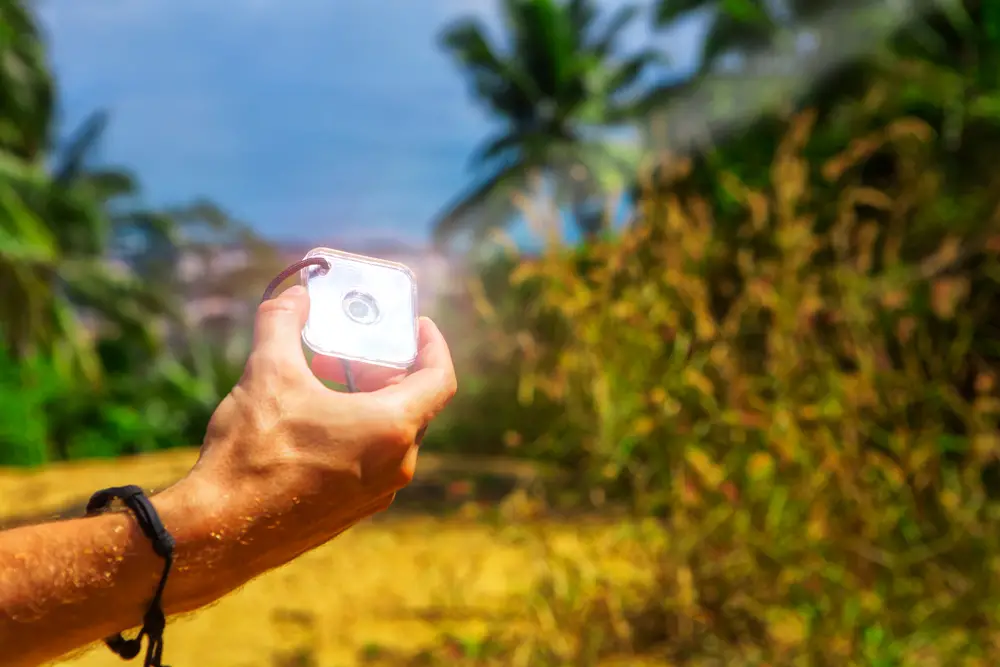
When you’re lost or in distress, signaling for help can be crucial. A small mirror or any reflective surface can help you get the attention of rescuers. By angling the mirror towards the sun, you can create a bright flash of light that can be seen from a significant distance. According to search and rescue expert Sarah Johnson, reflective signaling is one of the most effective ways to communicate your location to rescuers. It’s a simple tool, but it can dramatically increase your chances of being found quickly.
To use this technique, hold the mirror in one hand and extend your other arm in front of you, creating a V with your fingers. Aim the reflection between your fingers to target a specific location. Practice beforehand to ensure you can signal efficiently when needed. Even if you don’t have a mirror, items like a smartphone screen can work in a pinch. This method is both effective and easy to implement, making it a critical skill for anyone venturing into remote areas.
8. Use Charcoal For Water Filtration
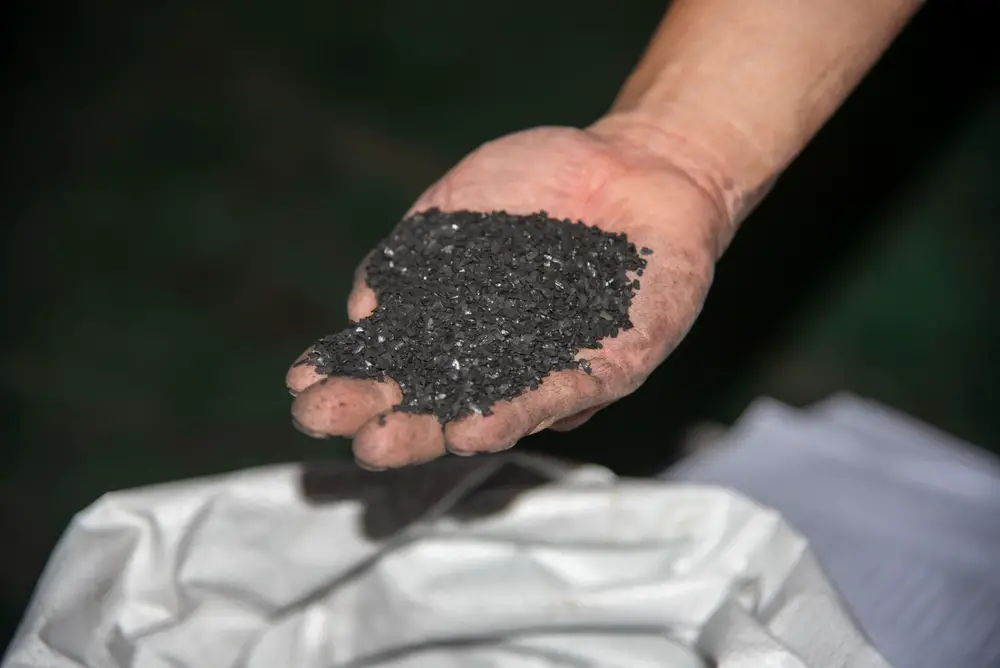
If you’re in the wild without a water filter, activated charcoal can be a great alternative for cleaning water. Charcoal has been used for centuries to filter water by absorbing impurities and contaminants. Simply crush charcoal into small pieces and layer it between clean cloth or grass, then pour the water through it to filter. While it doesn’t eliminate all pathogens, it can remove many toxins and improve the taste. It’s a useful trick to have when other purification methods aren’t available.
To enhance its effectiveness, follow up by boiling the filtered water, which will kill any remaining pathogens. You can create a more permanent filter by layering charcoal with sand and gravel in a container. This setup can be reused and is especially helpful for long-term survival situations. Just remember to regularly replace the charcoal to ensure its filtering efficiency. This method showcases how natural resources can provide essential survival solutions.
9. Utilize Pine Resin For Waterproofing
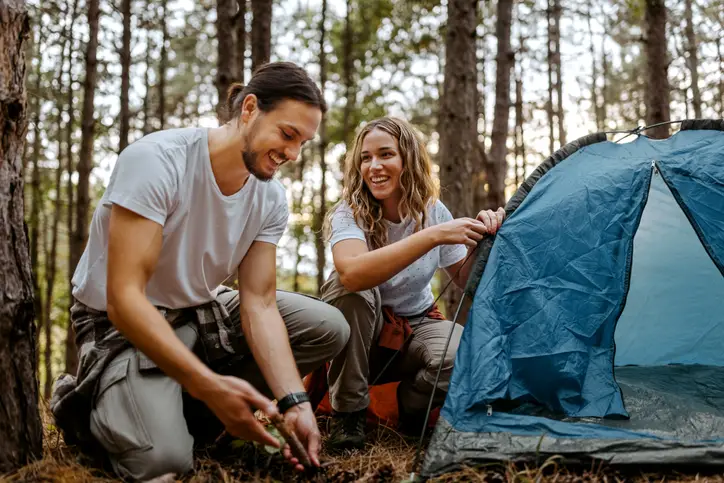
Pine resin is a natural adhesive that can be used to waterproof gear or seal leaks. If your boots or tent are letting in moisture, a layer of pine resin can act as a sealant. Find a pine tree and look for resin that has dripped from a cut or a broken branch. Warm it gently over a fire until it becomes pliable and apply it to the surfaces you want to waterproof. It’s a sticky solution, but it works wonders at keeping water out.
Besides waterproofing, pine resin can also be used to patch holes in your equipment. Once it hardens, it creates a strong seal that can hold up against the elements. In addition, pine resin has antimicrobial properties, making it useful for treating wounds in a pinch. Always ensure the resin is thoroughly cleaned before use if applying it to skin. This natural resource can be a lifesaver when modern materials aren’t at your disposal.
10. Use A Bandana For Multiple Purposes

A bandana is a lightweight and versatile tool that should be in every adventurer’s pack. You can use it for sun protection by tying it around your neck or head. If you find yourself in a dusty or smoky environment, it can double as a makeshift mask to filter the air. In emergencies, it serves as a bandage for wounds or a sling for injured limbs. Its adaptability makes it an essential piece of gear for any outdoor adventure.
Beyond personal protection, a bandana can serve as a signaling tool. A brightly colored bandana can be tied to a tree or worn in a visible location to increase your visibility to rescuers. You can even use it as a pre-filter for water or to store gathered food. Its lightweight and multifunctional nature make it a valuable item, especially when space in your pack is at a premium. A simple bandana can provide solutions to numerous challenges you might face outdoors.
11. Make Cordage From Plants
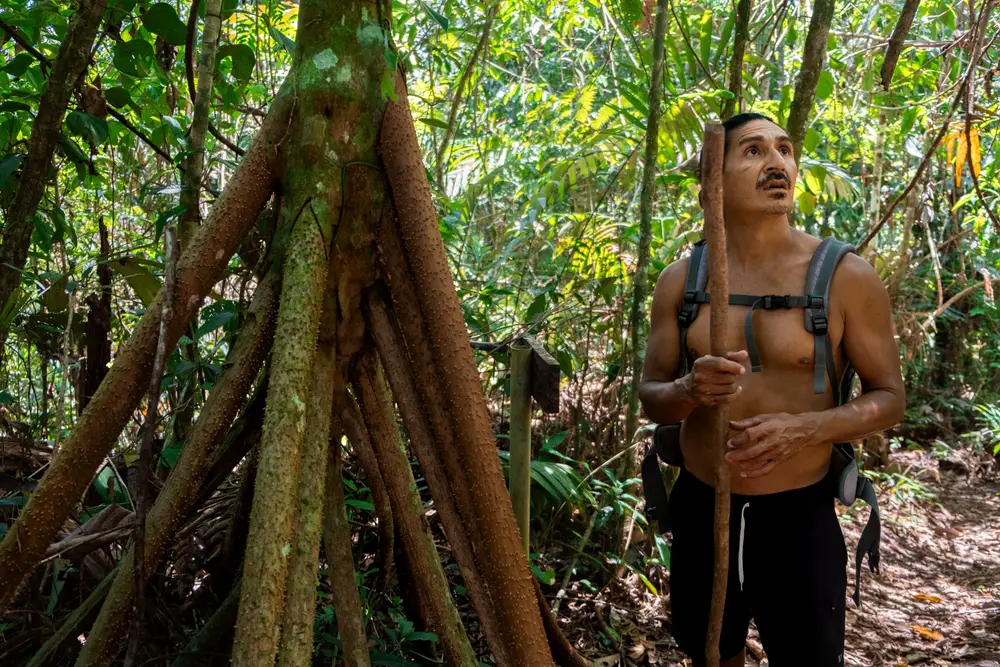
Cordage is crucial for building shelters, making traps, or even repairing gear. If you’ve run out of rope or paracord, you can make your own using natural materials. Many plants, such as nettles or yucca, have strong fibers that can be twisted into reliable cordage. Strip the fibers from the plant and twist them together, adding more fibers as needed for strength. This skill is invaluable for survival and can be practiced with various plants in different environments.
Once you have a sufficient length, it can be used just like any other rope. The key is to make the cordage as tightly twisted as possible to enhance its strength. Keep in mind that natural cordage may not be as durable as synthetic options, so use it wisely. It’s also useful for creating fishing lines or lashing items together. Learning this skill can make you more self-reliant and reduce dependence on manufactured tools.
12. Keep Your Feet Dry With Plastic Bags
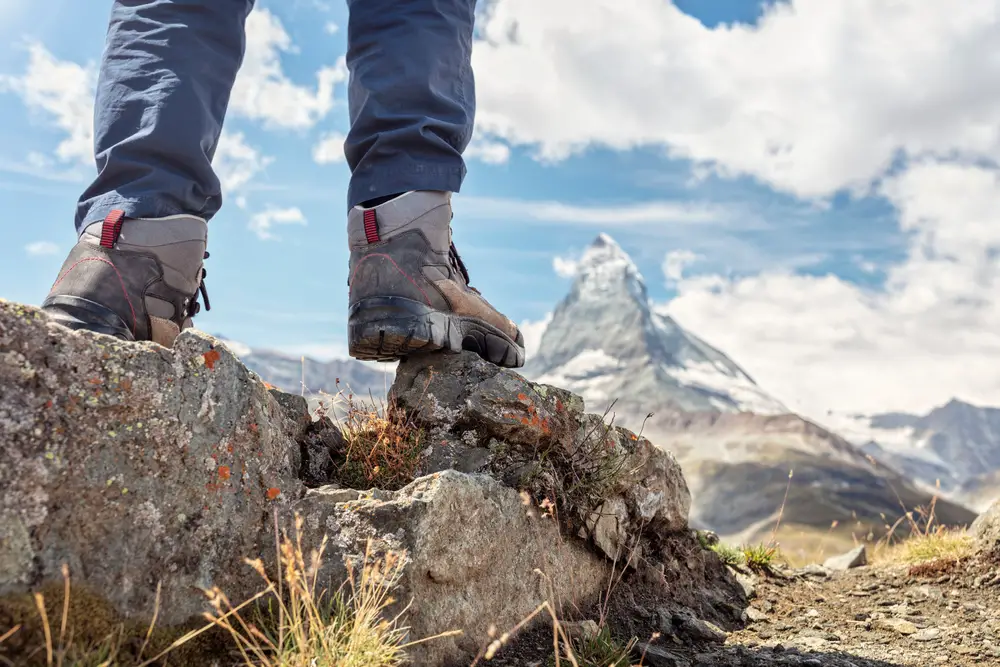
Wet feet can be more than just uncomfortable; they can lead to blisters and even hypothermia in cold conditions. If you find yourself in wet terrain, plastic bags can be used as a barrier to keep your feet dry. Simply slip them over your socks before putting on your shoes. This creates a waterproof layer that protects your feet from external moisture. It’s a simple solution but incredibly effective in maintaining foot health outdoors.
While this method traps moisture from sweat, it’s better than succumbing to external wetness from rain or puddles. It’s especially useful if you’re crossing a stream or hiking in prolonged wet conditions. Make sure to change out the bags regularly to keep comfort levels up. It’s not the most glamorous hack, but it’s a practical one that can save you from a lot of discomfort. Remember to pack a few extra bags in your gear for emergencies.
13. Create A Sun Compass With A Stick
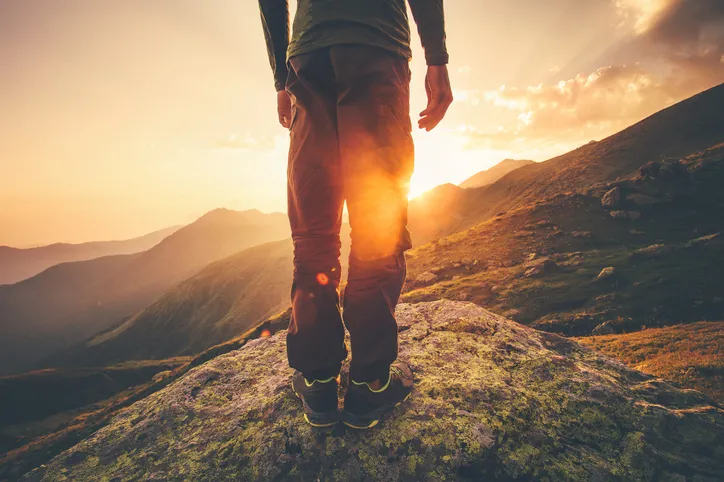
If you find yourself without a compass, a simple stick and the sun can help you find your way. This method relies on the sun’s predictable path across the sky. Place a stick upright in the ground and mark the tip of its shadow with a small stone. Wait about 30 minutes and mark the tip of the shadow again. The line between the two marks will run approximately from west to east, giving you a basic directional guide.
This method works best on sunny days when the shadows are distinct. Understanding the movement of the sun is crucial, as it changes based on the time of day and your location. It’s not as accurate as a compass, but it can help you navigate when you’re truly disoriented. Practice this method in different conditions to get a feel for how it works. It’s a useful skill that can provide guidance in the absence of modern technology.
14. Use Chapstick To Extend Fire Burn Time

Keeping a fire going is vital for warmth, cooking, and signaling, especially in challenging conditions. Chapstick, a common pocket item, can actually help extend the burn time of your fire. Apply a generous amount to cotton balls or other tinder to create a longer-lasting flame. The waxy substance acts as a fuel, maintaining the fire when other materials burn out quickly. This hack is particularly helpful when resources are scarce, and you need to make your fire last.
It’s a simple yet effective way to maximize your available resources. In wet or windy conditions, a chapstick-treated tinder can catch fire more easily than dry materials alone. It’s also a great way to use up an old or expired product that you might otherwise discard. Just remember to use it sparingly as a little goes a long way. This clever use of everyday items can make a significant difference in a survival scenario.
15. Signal With A Whistle

In an emergency, a whistle can be a crucial tool for signaling for help. Its sound carries much farther than your voice, especially in dense forests or windy conditions. Keep a whistle attached to your gear for easy access, ensuring it’s always within reach. In a panic, it’s easier to blow a whistle than to yell for extended periods. The sound can alert rescuers to your location, significantly increasing your chances of being found.
Using a whistle is also less exhausting than shouting, allowing you to conserve energy for other survival tasks. A good rule of thumb is to use three short blasts as a universal distress signal. Make sure your whistle is durable and capable of producing a loud, clear sound. Practicing with it before you need it ensures you know how to use it effectively. This simple tool is lightweight, efficient, and a must-have for any outdoor adventure.
